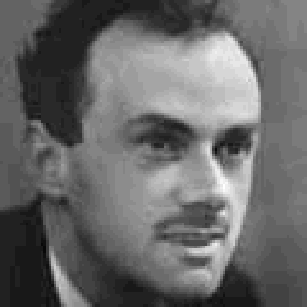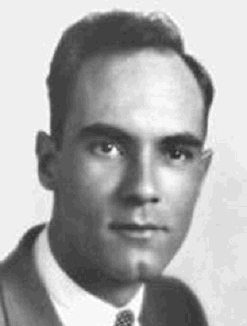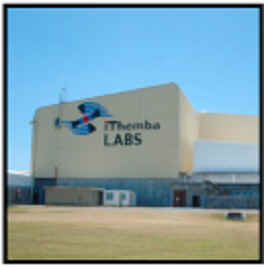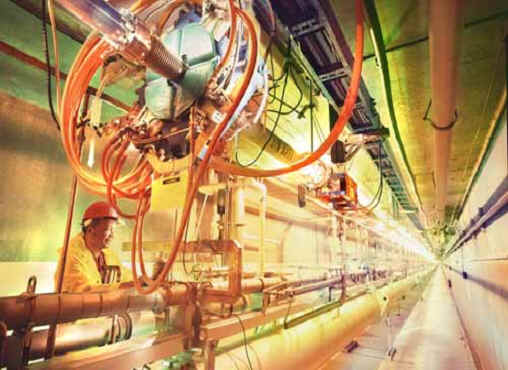 |
 |
Paul A.M. Dirac (1902-1984) |
Carl D. Anderson (1905-1991) |
In 1928, the British physicist Paul A.M. Dirac (1902-1984) formulated a theory for the motion of electrons in electric and magnetic fields. Such theories had been formulated before, but what was unique about Dirac's was that his included the effects of Einstein's Special Theory of Relativity. Theory worked exceptionally well, describing many attributes of electron motion that previous equations could not. But his theory also led to a surprising prediction that the electron must have an "antiparticle," having the same mass but a positive electrical charge… In 1932 Carl Anderson observed this new particle experimentally and it was named the "positron." This was the first known example of antimatter.
 |
 |
Paul A.M. Dirac (1902-1984) |
Carl D. Anderson (1905-1991) |
"On August 2, 1932, during the course of photographing cosmic-ray tracks produced in a vertical WIlson chamber (magnetic field of 15,000 gauss) designed in the summer of 1930 by Professor R. A. Millikan and the writer, the tracks shown in Fig. 1 were obtained, which seemed to be interpretable only on the basis of the existence in this case of a particle carrying a positive charge but having a mass of the same order of magnitude as that normally possessed by a free negative electron." -Carl Anderson*.
The Universe as we know it is made up with remainings of astronomers call great annihilaiton. 10 seconds after the Big Bang has place annihilation of electron-positron pairs. Temperature during this period was roughly 5 billion K, or about 500 keV per particle. Apart from the neutrinos and the photon, the lightest particle in nature is the electron. The rest mass of an electron corresponds to an energy of 511 keV, so it only takes twice that much energy to create an electron-positron pair. That means that at this temperature, two particles colliding head-on can have enough kinetic energy to create a electron-positron pair what created large number of electrons and positrons. But as temperatures cool below this point, the density of this « soup » drops off exponentially: electron-positron pairs annihilate each other, leaving radiation. A perfect creation would have lead to equal quantities of these two types of matter. This in turn would have lead to a universe destroyed within an instant of its creation. The conclusion drawn from this reasoning is that our universe arose because it is quintessentially asymmetric. In the 1960s, a Russian physicist called Andrei Sakharov showed that a such slight asymmetry between matter and antimatter is possible. It is called now CP violation.
Nowadays positrons are produced in laboratory scale either by:
 |
 |
iTHEMBA Labs in RSA – one of the producers of radioactive isotopes. |
2-mile long SLAC linear accelerator used among others to creation of positrons by pair production. |
Astronomers have discovered evidence for antimatter near the center of our Galaxy by observing photons with an energy of 511 keV. This image shows contours of this radiation detected by NASA's Compton Gamma Ray Observatory overlaid on an optical picture of the Galactic center. The vertical structure is a jet of mutually-annihilating electrons and positrons.
Some properties of radionuclides most often used as positron sources.E – maximum quanta energy, F - efficiency, Eg - energy of the quanta emitted during radioactive decay.
Nuclide |
Half lifetime |
E (MeV) |
F (%) |
Eg (MeV) |
11C |
20.4min |
0,96 |
100 |
– |
18F |
110min |
0,633 |
97 |
– |
22Na |
2.6 yr |
0,546 |
90 |
1,275 |
58Co |
70.8 days |
0,475 |
15 |
0,811 |
|
64Cu |
12.7hrs |
0,653 |
19 |
– |
68Ge |
271days |
1,90 |
90 |
– |

Timeline of the positron techniques history. One can note that in comparison to other experimental techniques this one is quite young.
*)ANDERSON, Carl. "The Positive Electron", in The Physical Review. Vol. 43, Second Series, No. 6., pp. 491-494. Lancaster, PA and New York, NY: for the American Physical Society by the American Institute of Physics, March 15, 1933.